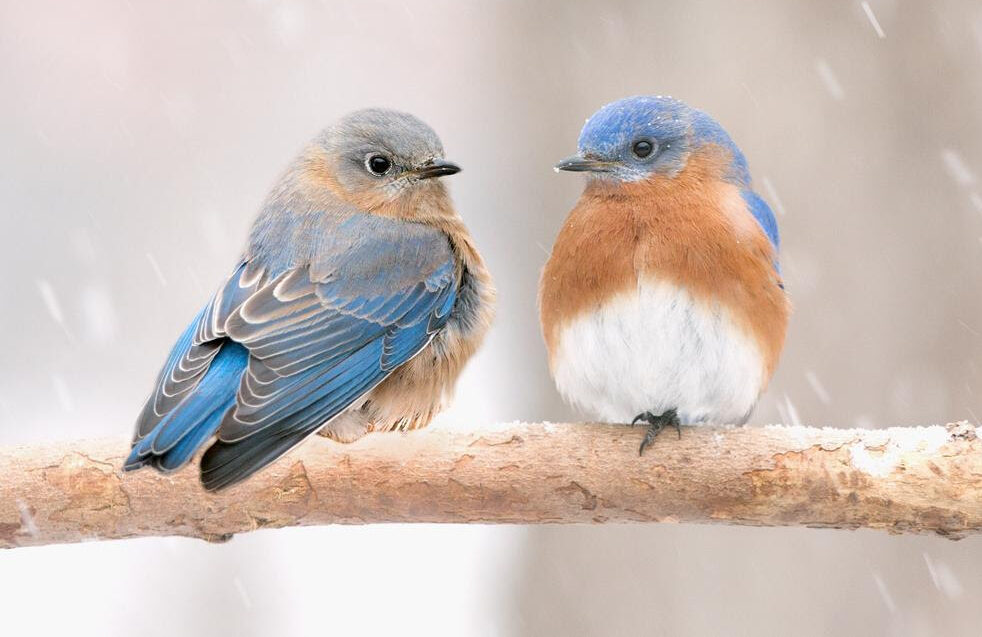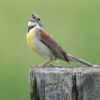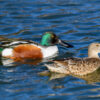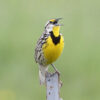Eastern Bluebird, Sialia sialis
Bill Rowe
The bluebird, our state bird, seems so strongly associated with fresh greenery, dogwood and redbud blossoms, and other aspects of spring that one may be wondering…why February 1? Yet it is in winter that a colorful bird’s colors may show to best advantage—and bluebirds are certainly around in the winter to liven up the landscape. It isn’t clear how many may have migrated in from farther north and how many may be local birds that stayed here to eke out a living; nonetheless, any winter outing through the countryside is apt to turn up a small flock or two, their vivid blues standing out against the snow or the gray and brown vegetation. They can be picked out overhead by their mellow “chu-wee” calls, and come spring, the males begin delivering their brief warbling songs. Originally they made their nests in tree cavities, but they adapt readily to manmade houses that can help them dodge competition from starlings and House Sparrows as well as intrusions from cowbirds. Our Eastern Bluebird has two close cousins out west, the Mountain and Western Bluebirds; together they form a distinctive genus within the thrush family (the juvenile’s spotted breast gives a hint of this).
IDENTIFICATION: Bluebirds are small and compact, a bit larger than most sparrows. Remember “sexual dimorphism,” the term for males and females looking different from one another? Bluebirds show this to a moderate degree, with the sexes not vastly different, as in the Red-winged Blackbird, but not basically identical, as in the Blue Jay. The photo above shows the male with his clear bright blue, rusty red, and white, and the female with her more subdued bluish, reddish, and gray tones. Among our regular birds there is nothing quite like them, but it is worth keeping in mind their wandering cousin, the Mountain Bluebird, which has shown up over a dozen times in Missouri. The male is all sky blue above and a paler blue to blue-gray below, with no reddish anywhere; the female is more of a silvery gray overall but can sometimes have reddish on the breast and be more difficult to identify.
ST. LOUIS STATUS: A fairly common nesting bird in farming country, parks, orchards, and other semi-open areas; in winter, still around but less predictable, in small flocks here and there. Efforts to set up nest boxes that are sized and located properly, on both public and private lands, have helped keep the bluebird population healthy.
Learn more and listen to the songs and calls of Eastern Bluebirds here.
Juvenile fed by dad
Photo Credit: Al Smith
Male Mountain Bluebird in Missouri
Photo Credit: Al Smith






